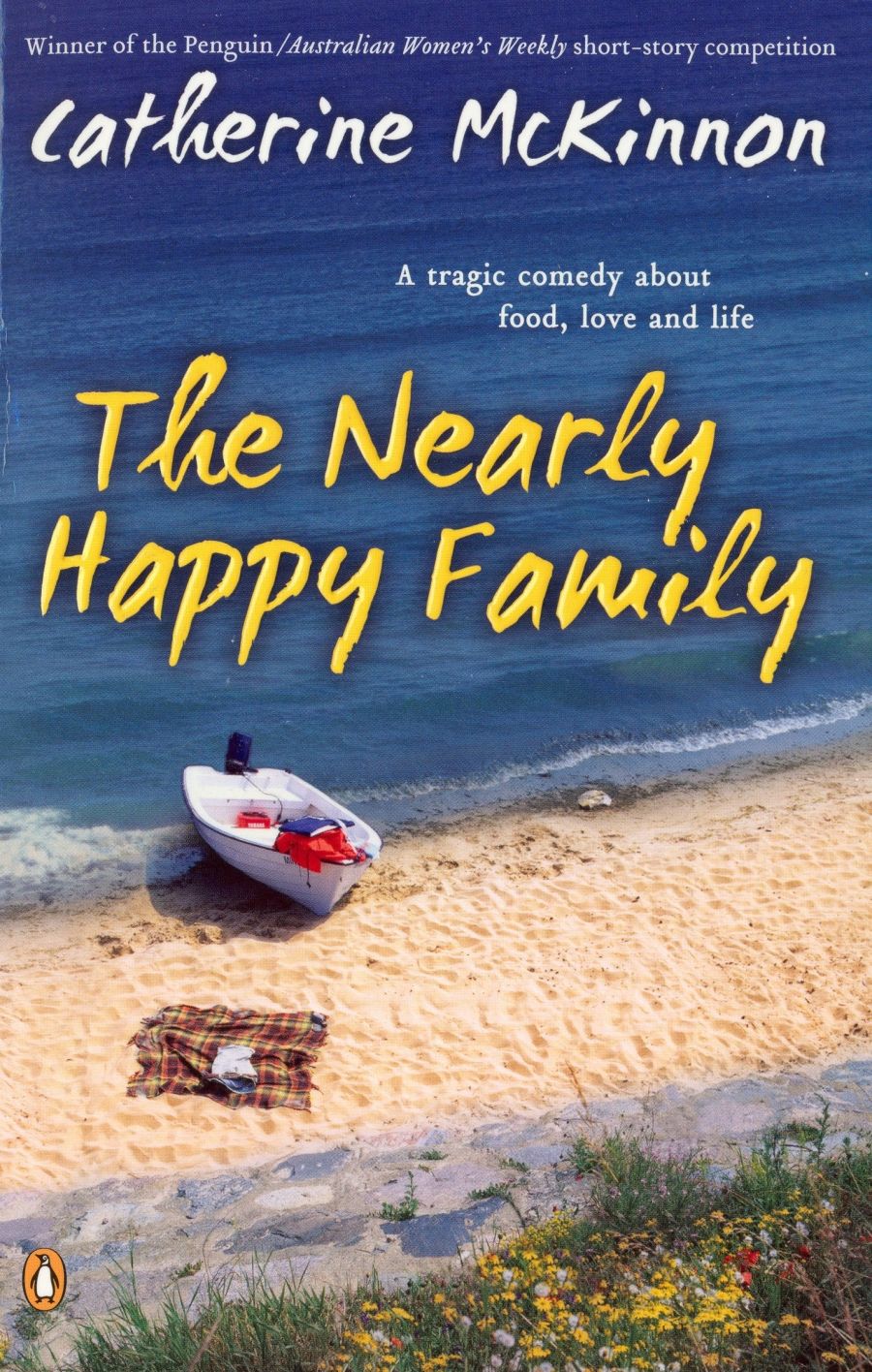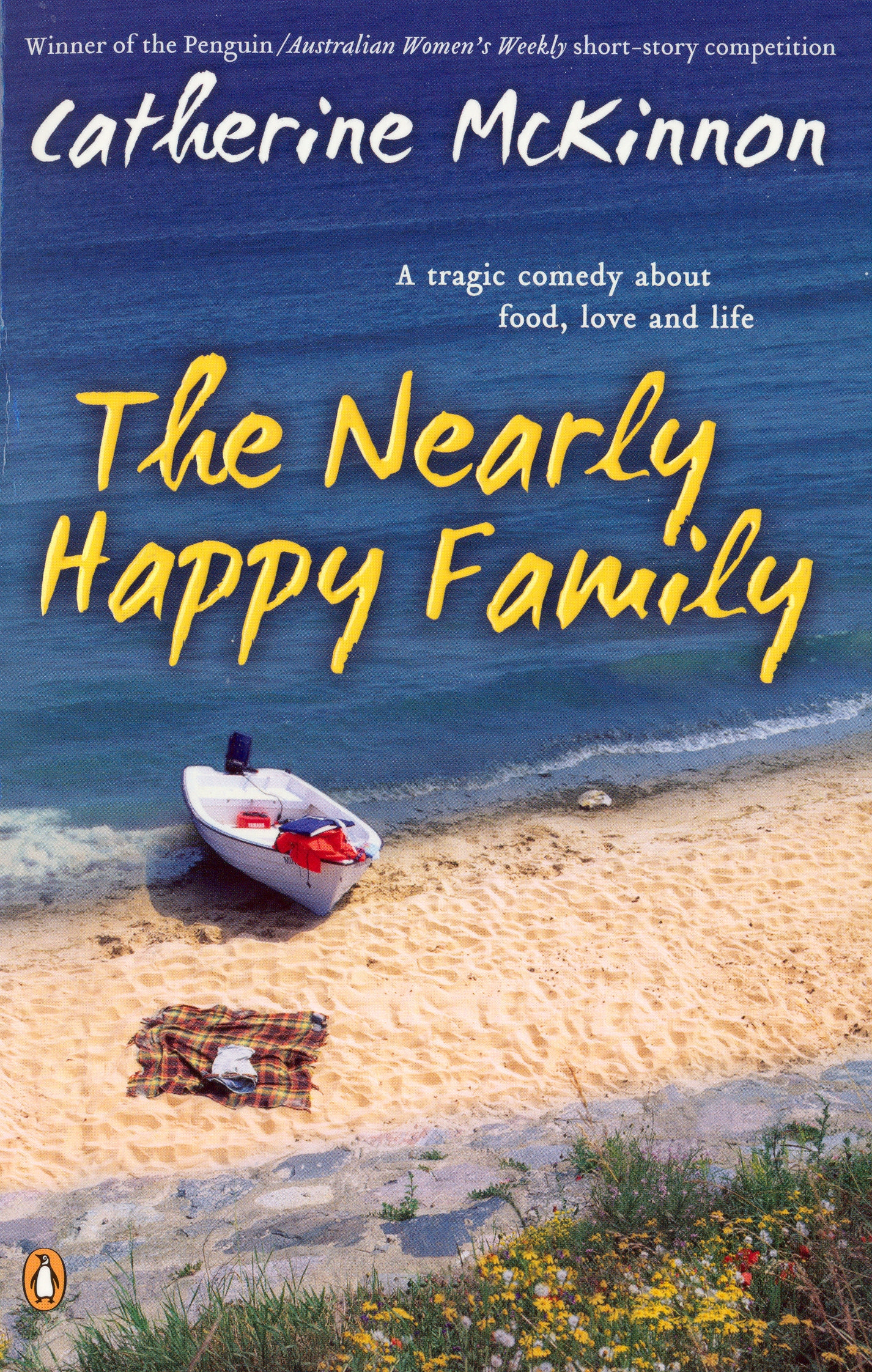
- Free Article: No
- Custom Article Title: A tragic comedy
- Review Article: Yes
- Article Title: A tragic comedy
- Online Only: No
- Custom Highlight Text:
Catherine Mckinnon is known around Adelaide for her work as a writer–director with the State Theatre and Red Shed Theatre companies. In 2006 she won the Penguin/Australian Women’s Weekly short story competition and obviously came to the attention of Penguin editors. The Nearly Happy Family, her first novel, is described on the front cover as ‘a tragic comedy’.
- Book 1 Title: The Nearly Happy Family
- Book 1 Biblio: Viking, $32.95 pb, 461 pp
- Book 1 Cover Small (400 x 600):

- Book 1 Cover (800 x 1200):

It is about twelve months since the death of Vince Delaney, partner to Jackie and father to Claire and her two younger siblings. Vince may or may not have committed suicide, but his death has cast a long shadow over his surviving family which, when the novel opens, has gathered at their beach shack with the other members of the extended family to celebrate the New Year – 2001, as it is subsequently revealed. Claire is outraged because of the presence of her mother’s new young boyfriend, Ben, whom she intends to marry. Whether Jackie will pursue her own heart or listen to the objections of her daughter is one of the story strands that works its way through the next twelve months: the second is Claire’s rebellious move to leave home and school, and to apprentice herself to an Italian chef. Will Jackie give up the booze, commit herself to Ben and thus alienate her daughter, or will Claire relent and return home, having learnt how to cook the perfect pappardelle? That, in a nutshell, is the plot of The Nearly Happy Family. It should not have taken more than 460 pages to tell.
What kept me reading, despite the lack of narrative suspense, were the finely drawn and delineated characters. At first I was as bewildered as anyone who is thrust into a party and summarily introduced to fourteen family members. In an attempt to get them all sorted, I scribbled on the back cover a sort of family tree to reference when confusion set in. The main action revolves around three generations living in an old family home in Stanley Street, North Adelaide: Grandpa TJ, his daughter Jackie, and her three children. Two other families, headed by Jackie’s two sisters and including their partners and children, also contribute to the mix, as do the half-dozen characters in Claire’s restaurant family who are eventually drawn into the Delaney circle.
It is to McKinnon’s credit that she successfully juggles such a large cast of characters and gives each a distinct, engaging personality. Claire, with her angry, self-absorbed teenage voice, is her most successful creation. I wondered why Penguin did not encourage McKinnon to edit her manuscript with an eye on the Young Adult market. Claire is more than capable of telling the story of The Nearly Happy Family on her own. It would have improved the novel by shortening it and tightening its focus. The novel is crammed with too many issues: death, depression, alcoholism, lesbianism, suicide, infidelity, mid-life crises, sibling rivalry, unrequited love, drugs, child sexual abuse – even the attack on the World Trade Centre.
But those issues that personally concern Claire will most interest teenage readers: her best friend has relocated interstate; she is appalled by what she interprets as her mother’s untimely action in replacing one man with another; she has started an ambitious apprenticeship; and she may have found herself a boyfriend. Apart from the cooking tips and an inside look at a restaurant modelled on Adelaide’s Chianti Classico, I am not convinced that these themes, and the first-person narration, will greatly interest an adult readership. I did wonder, too, about Claire’s rapid rise in the kitchen. It seems very unlikely that a fifteen-year-old apprentice, even with instruction, could turn out the complex dishes she does, especially ones deemed fit to serve to a renowned food critic, or these dishes she sends out to a table of ten:
One pappardelle special, two tortellini, two gnocchi, one fish soup, three [blue crab] swimmers, and one eggplant, followed by one bream, two ossobuco, two [panroasted] lamb, three tuna, one hunter chick and one beef fillet.
There is a funny and more credible scene earlier when chef Nino is soliciting her opinion of his rare beef with caramelised onion and Claire wants to compliment him. ‘I’d order it,’ she says, ‘because it tastes like a really excellent steak sandwich, like as good as you’d get at the Blue and White.’ Adelaide readers will know what she means.


Comments powered by CComment